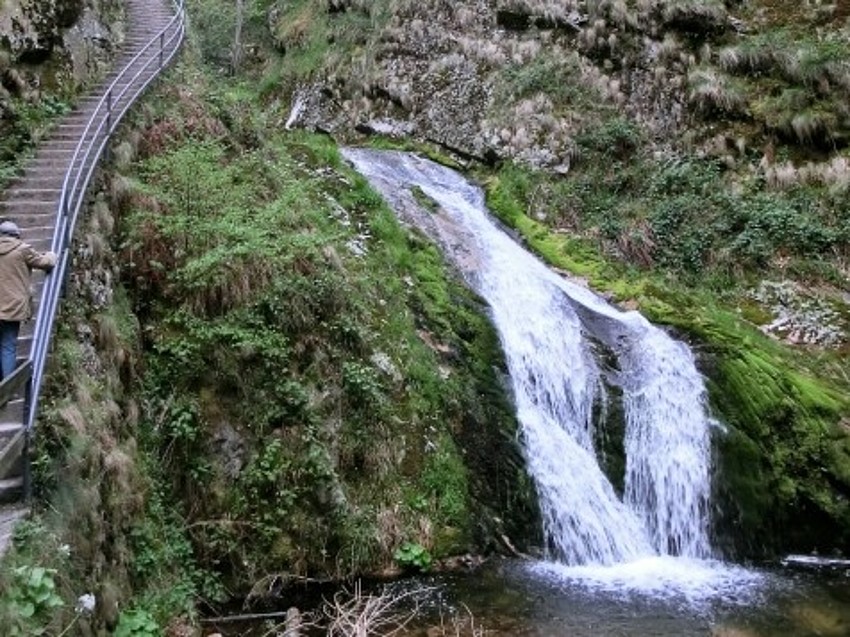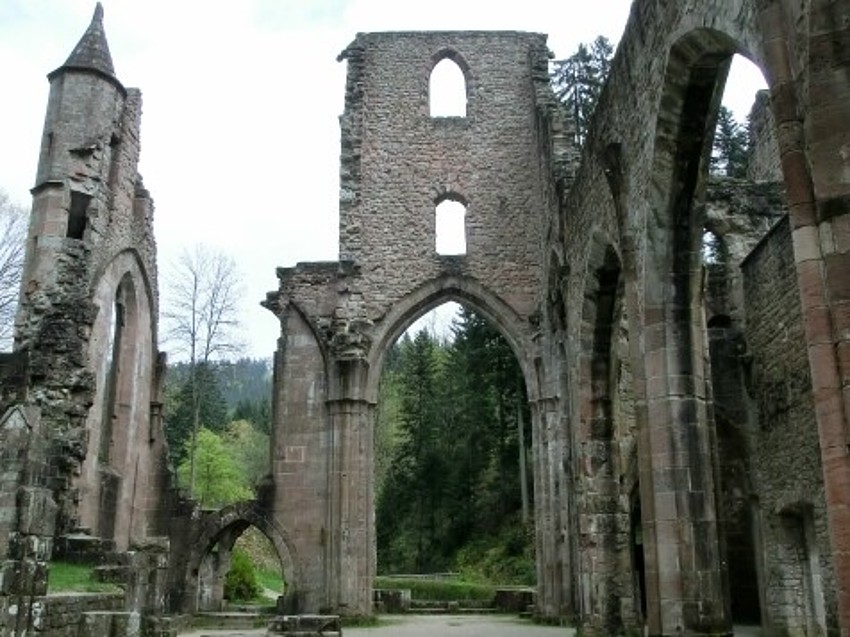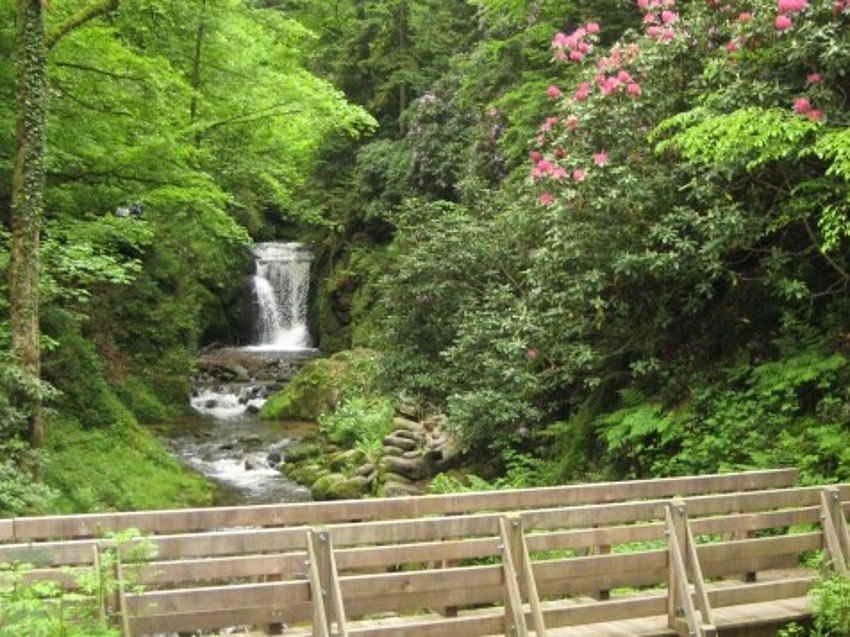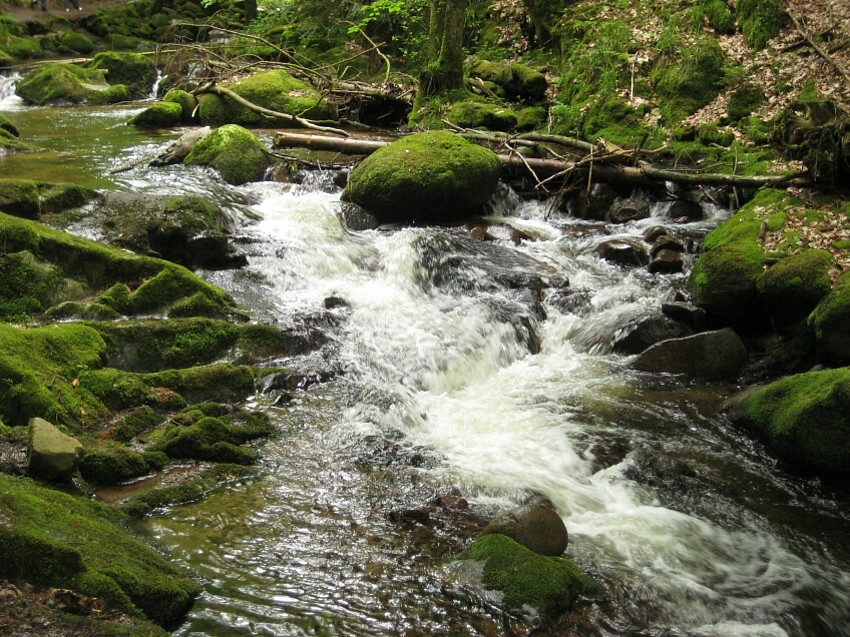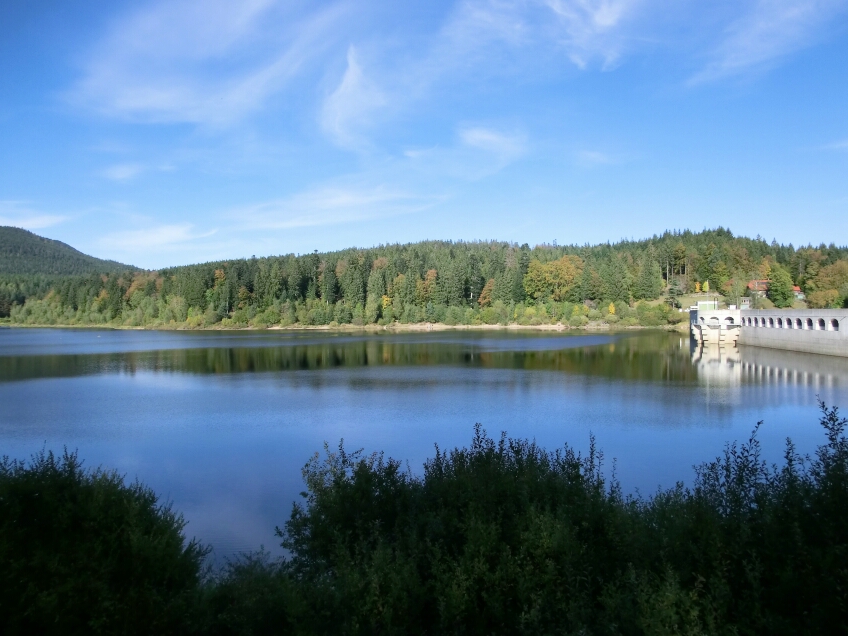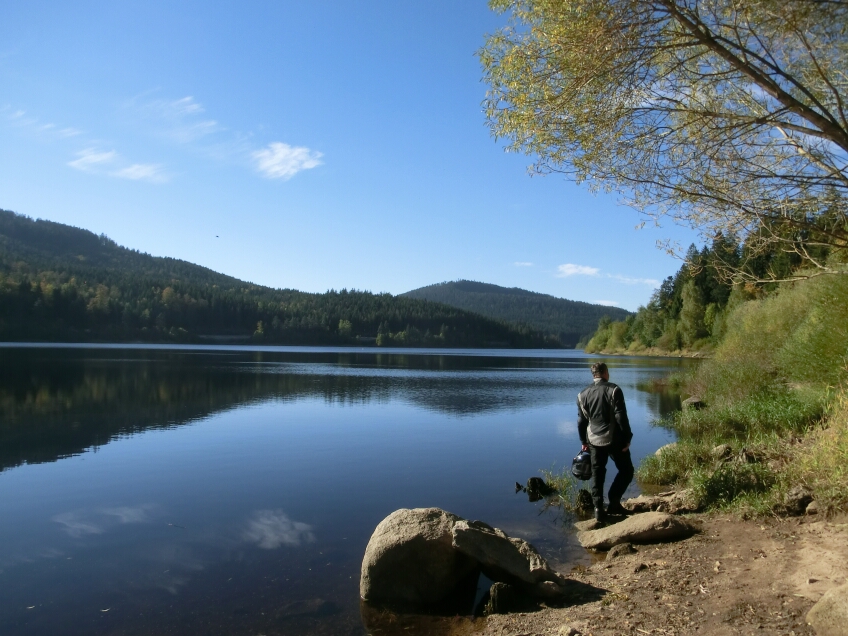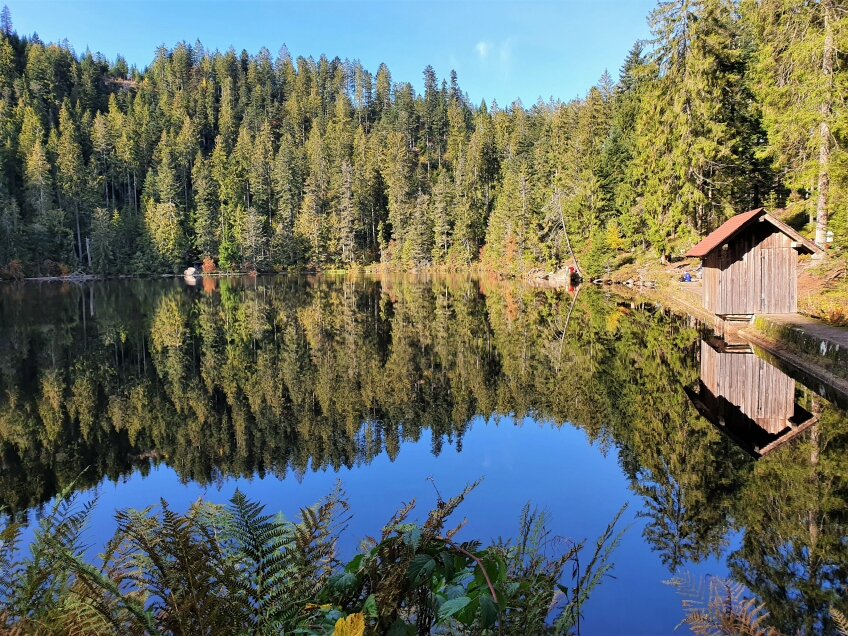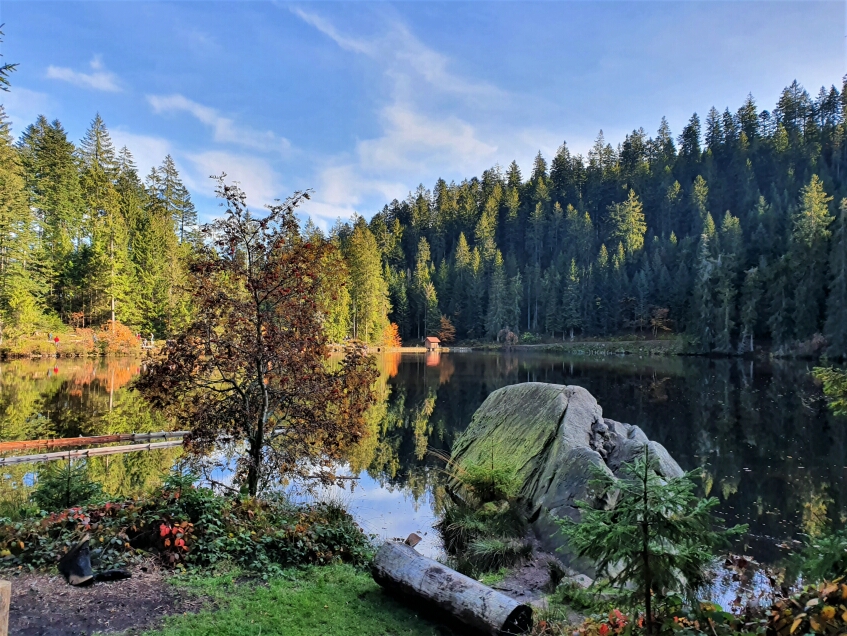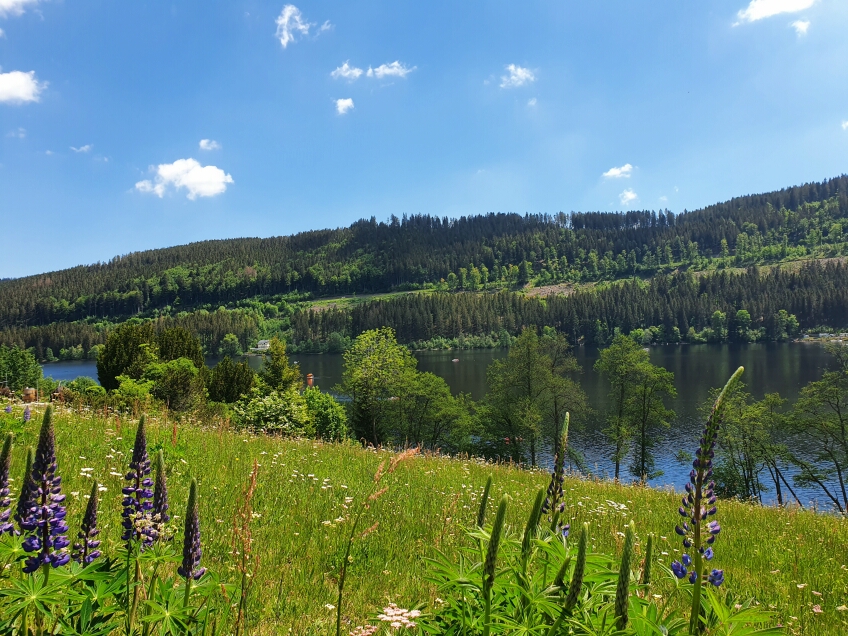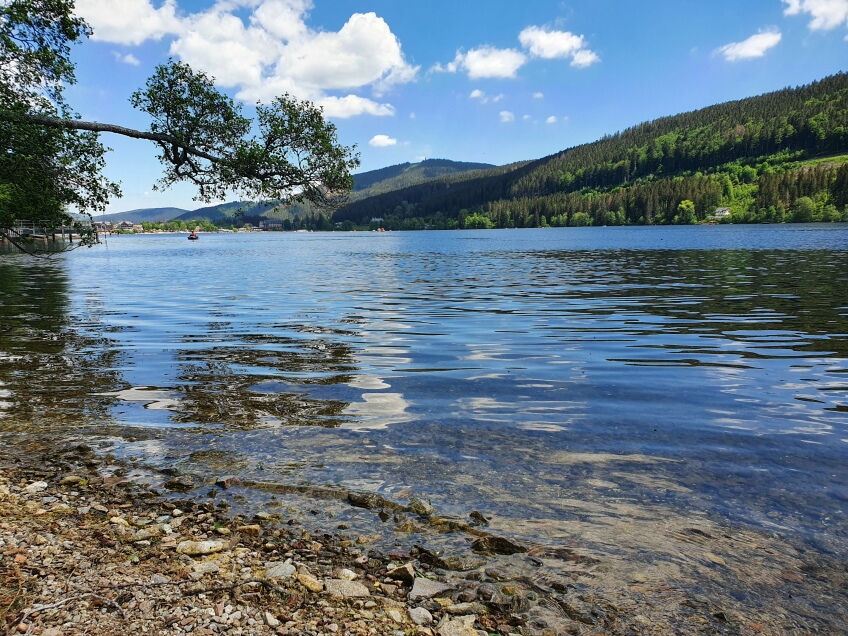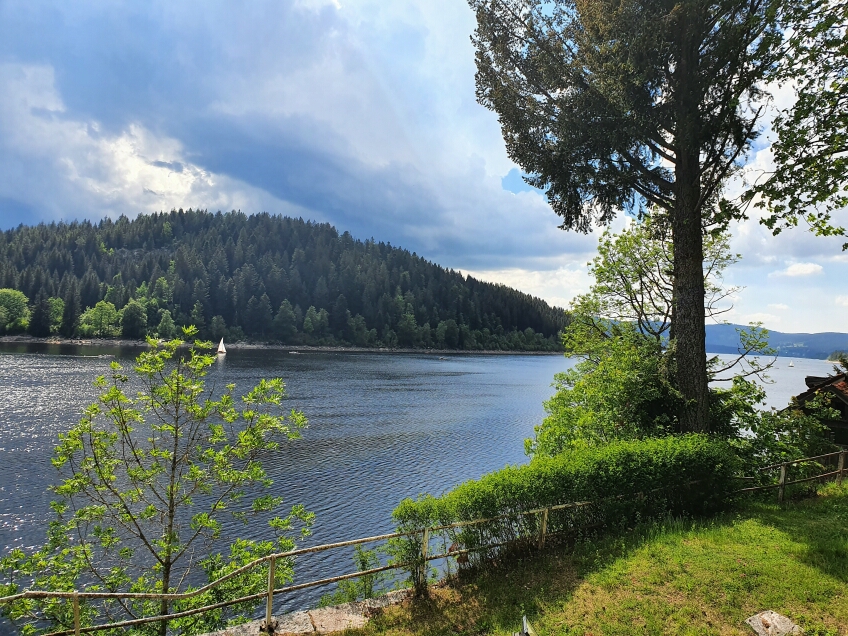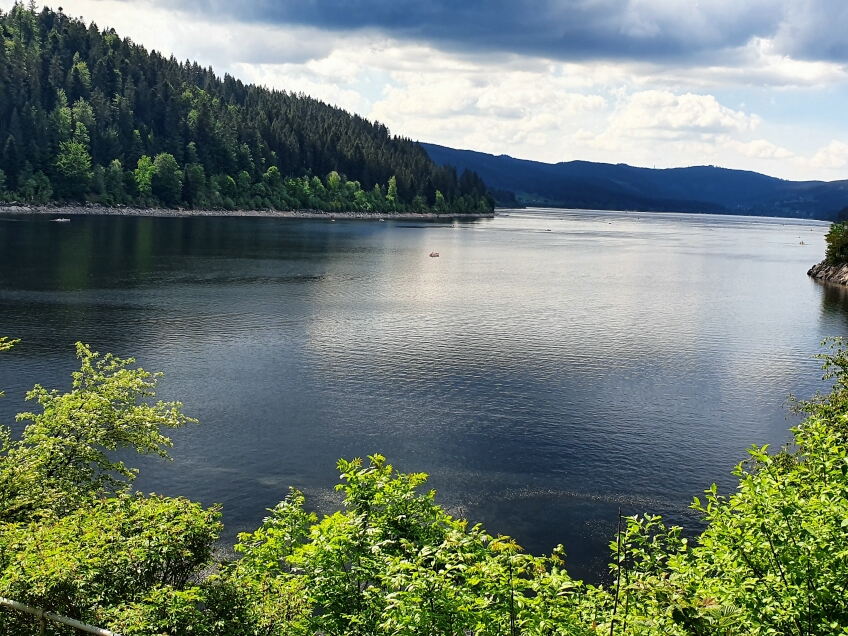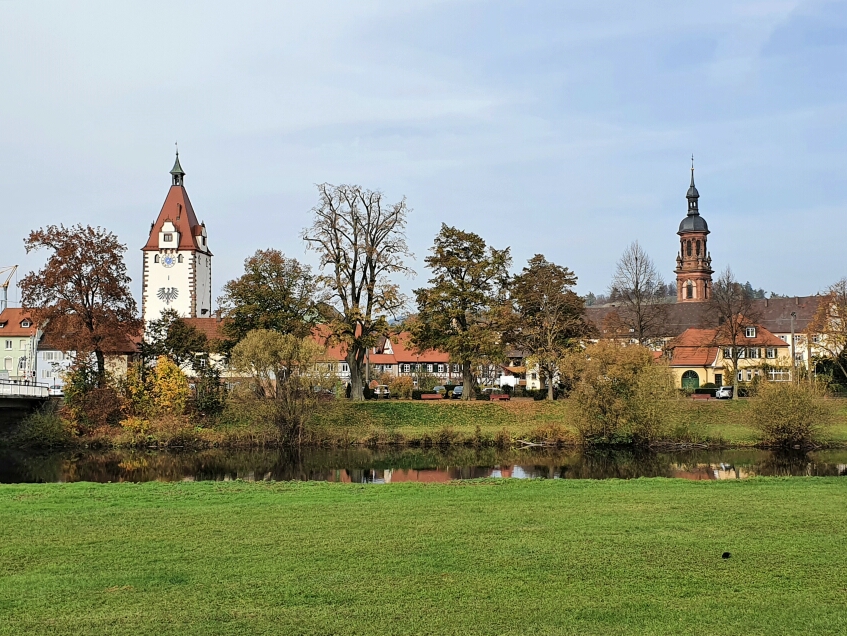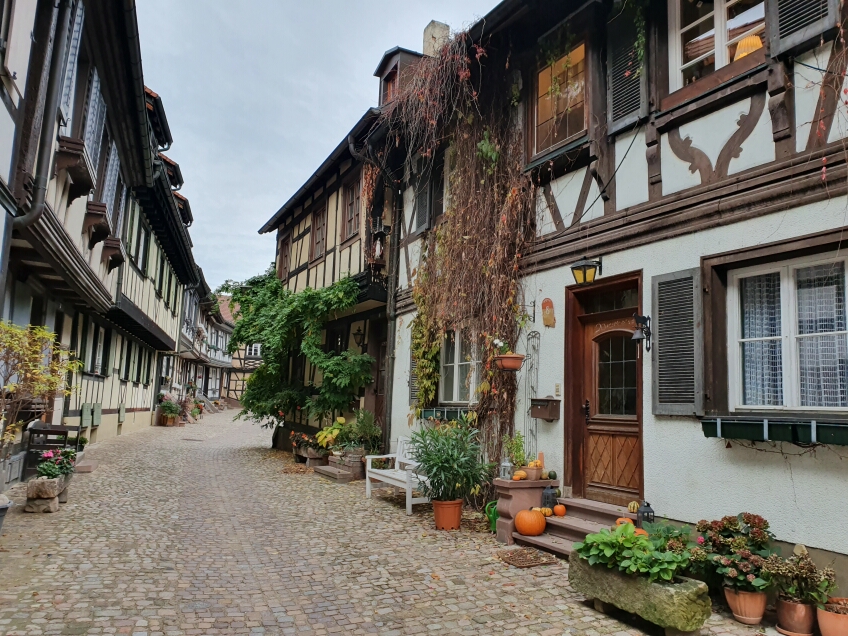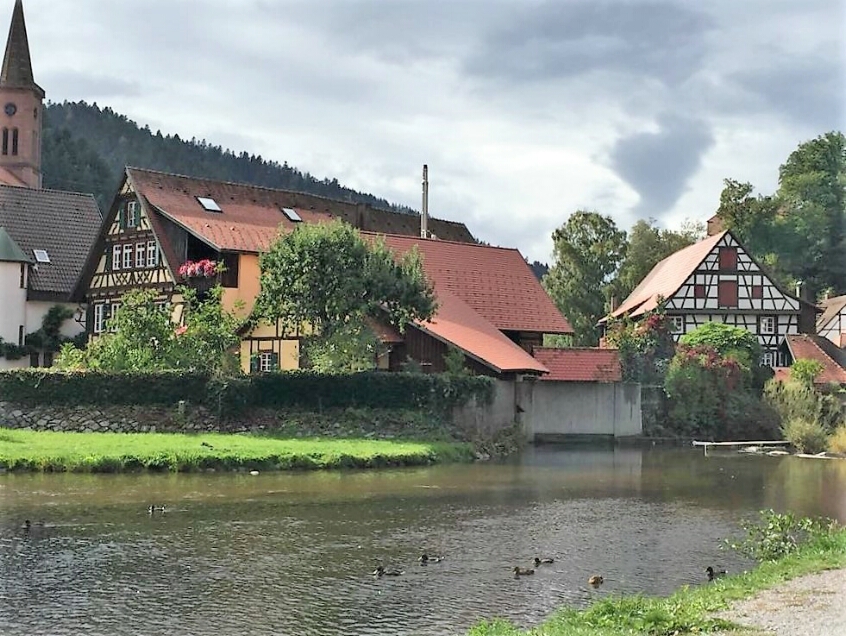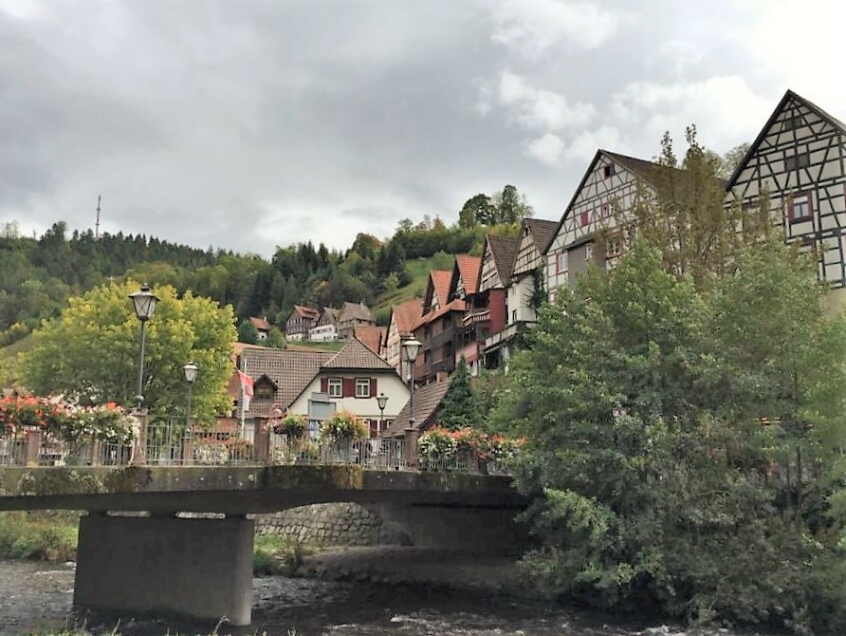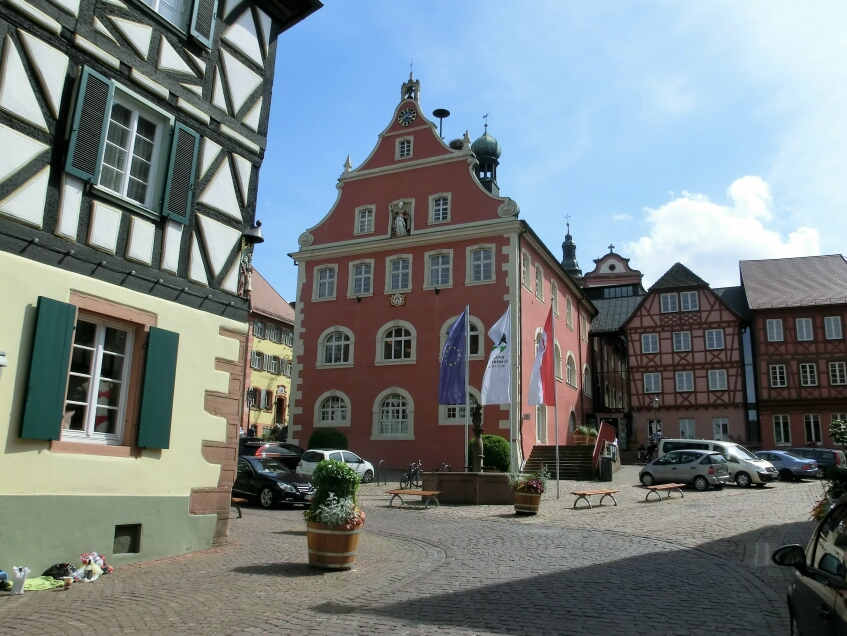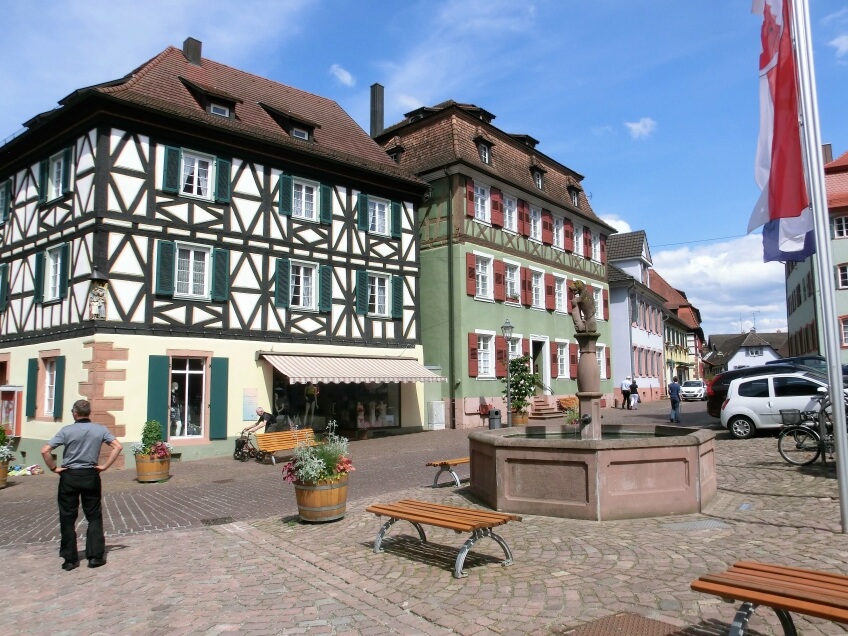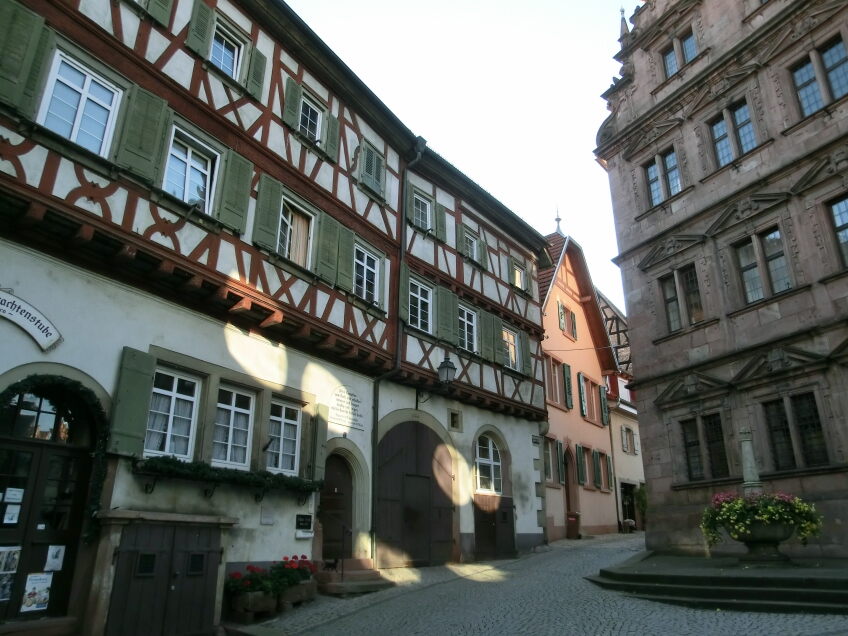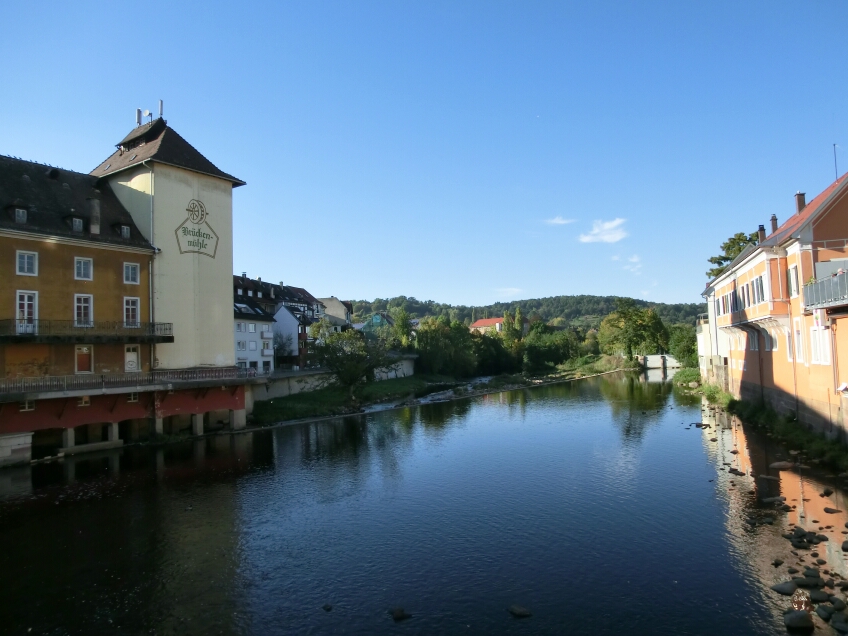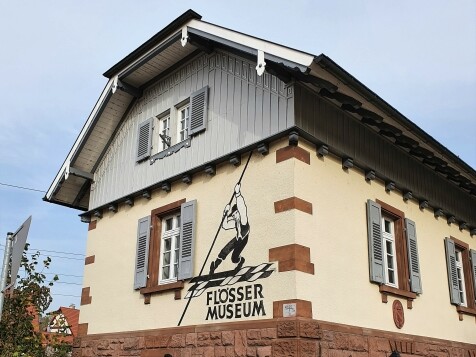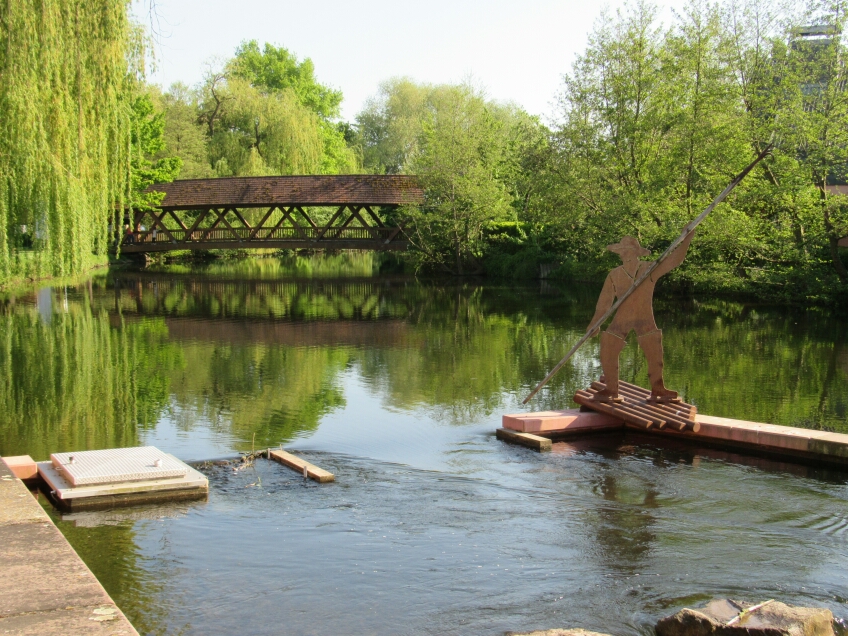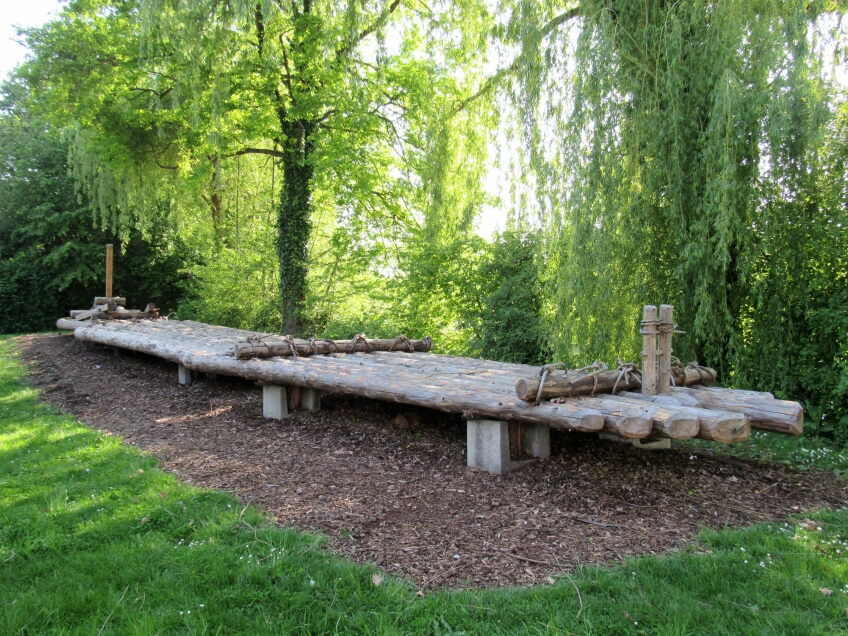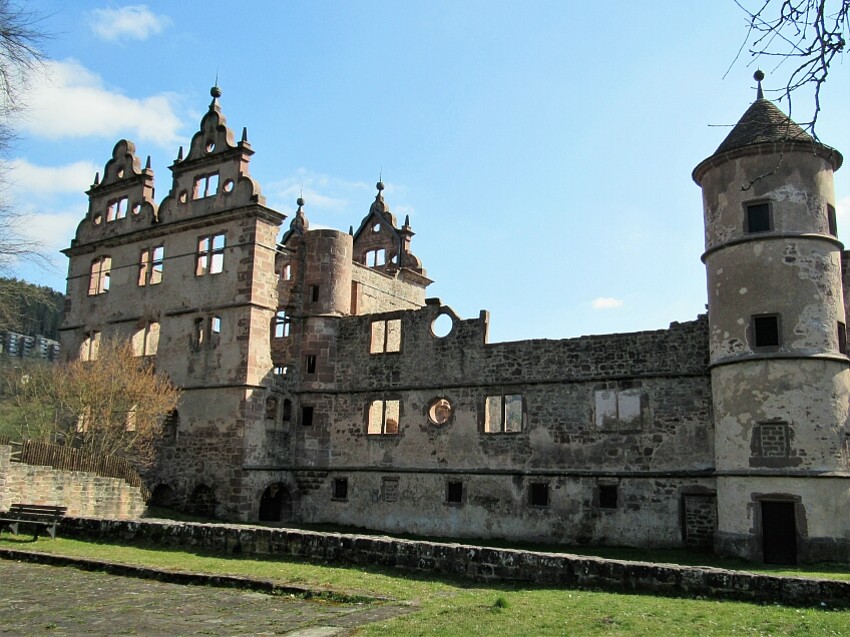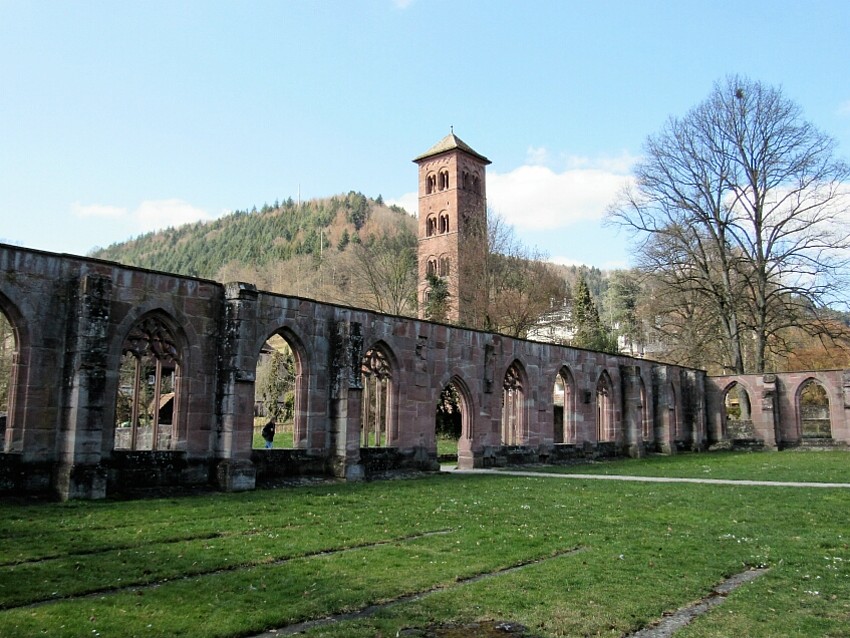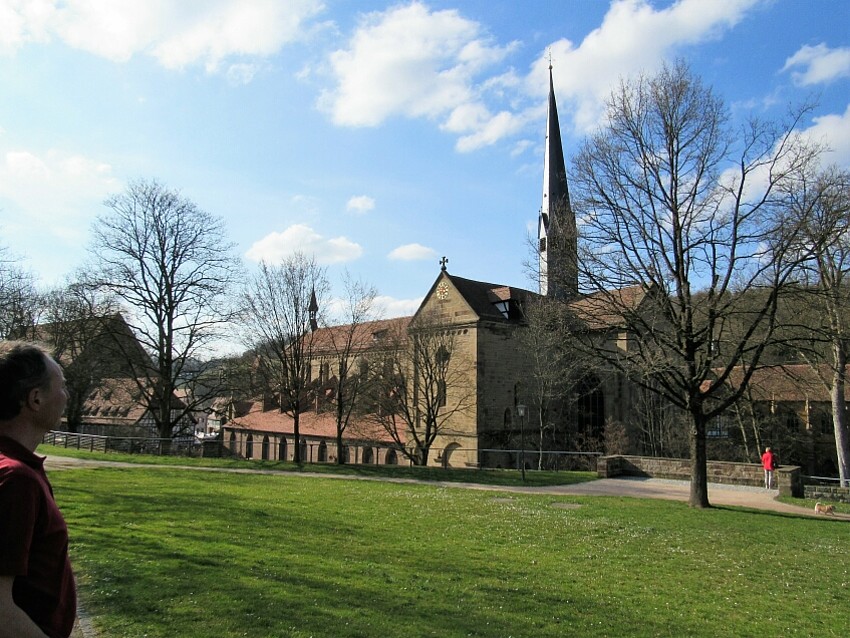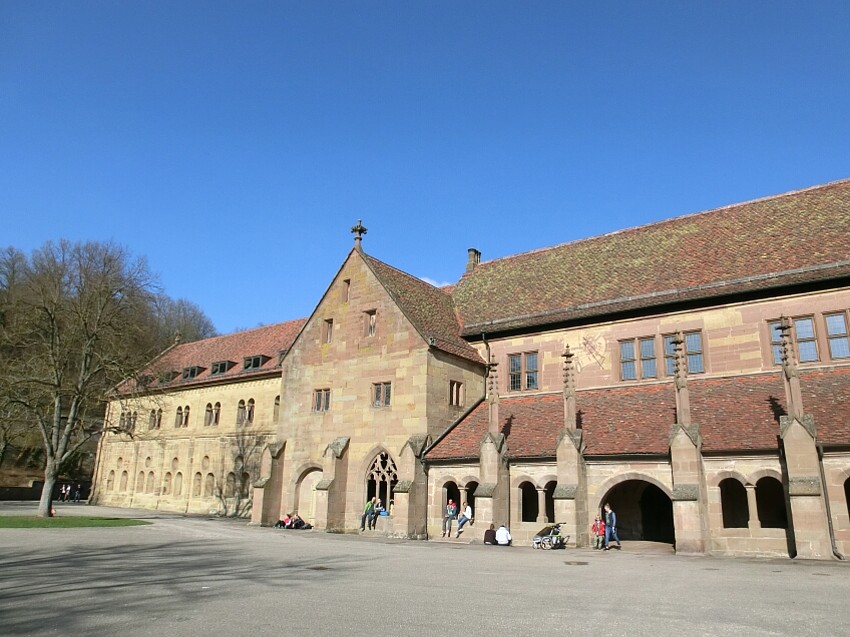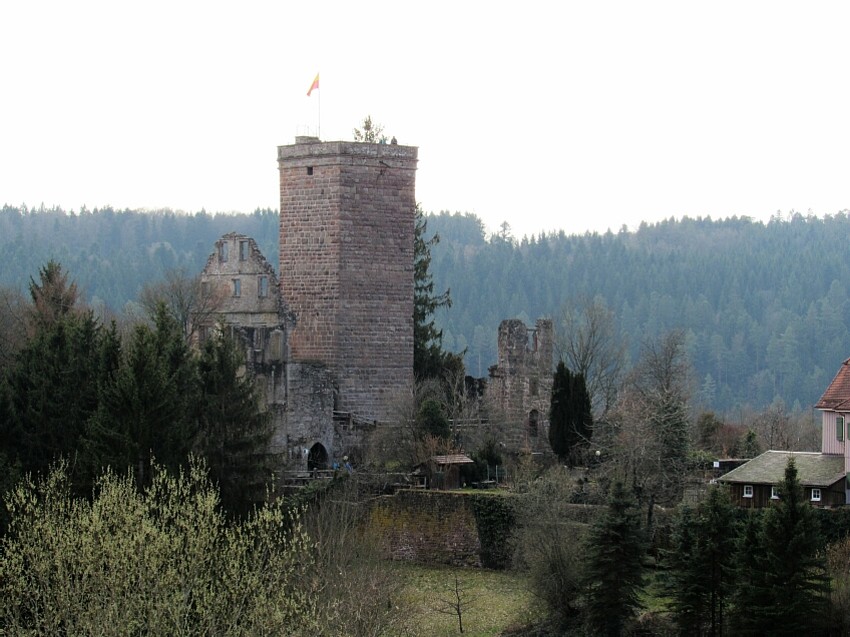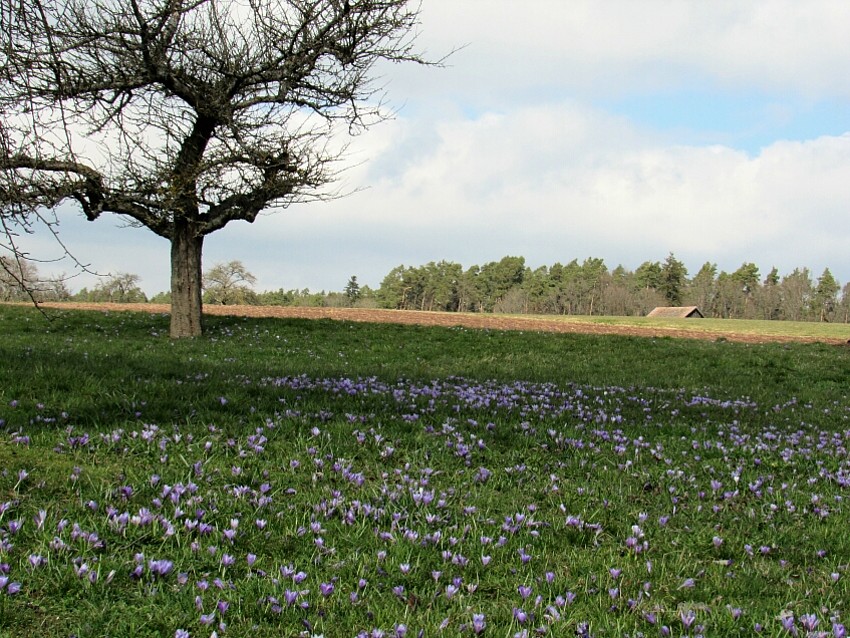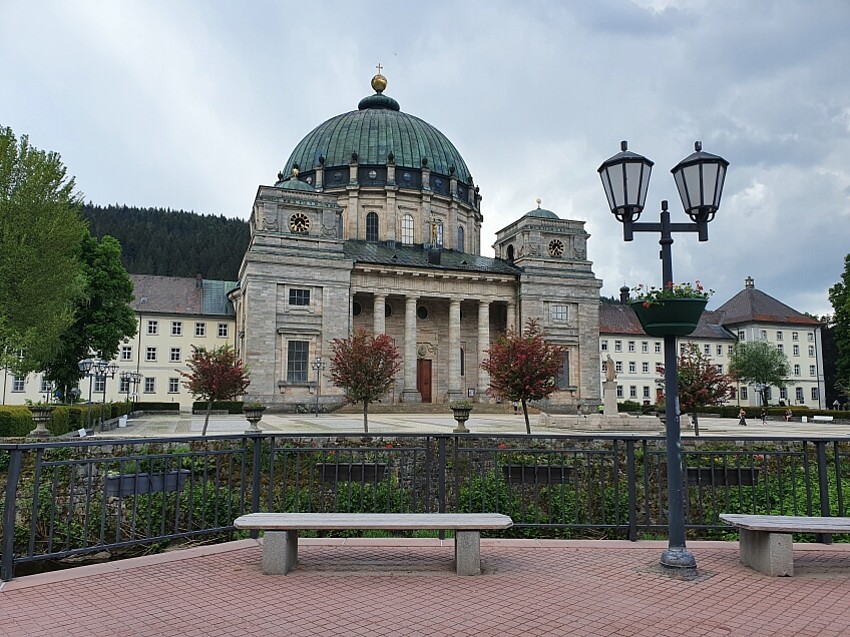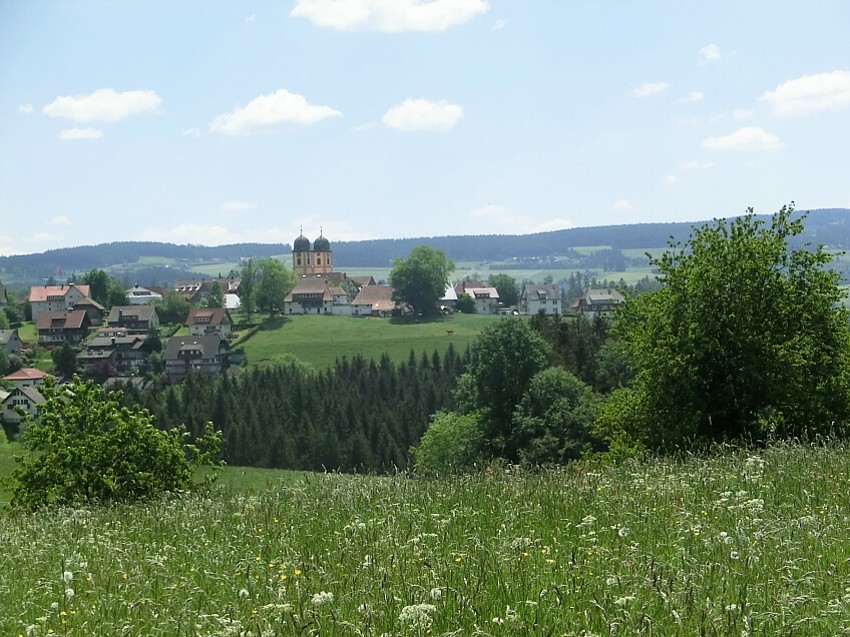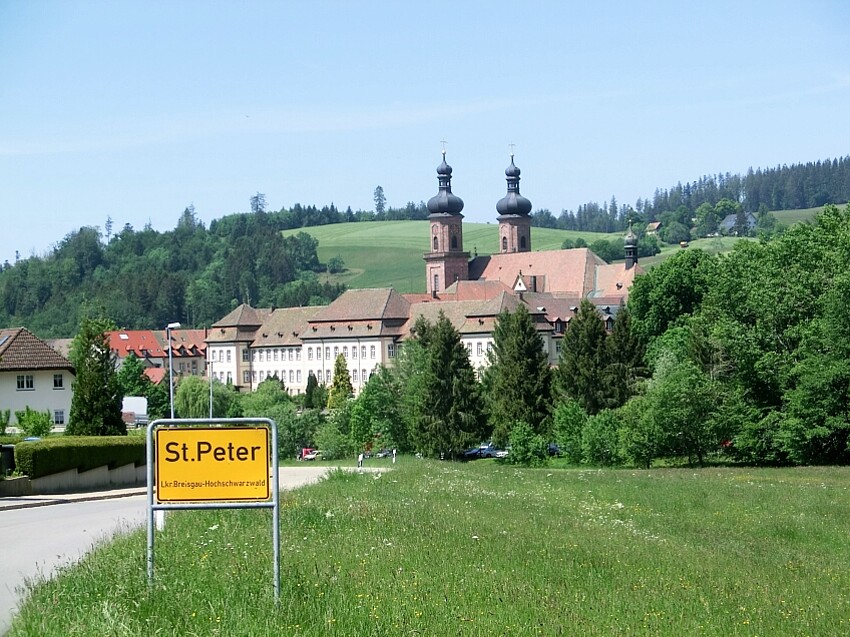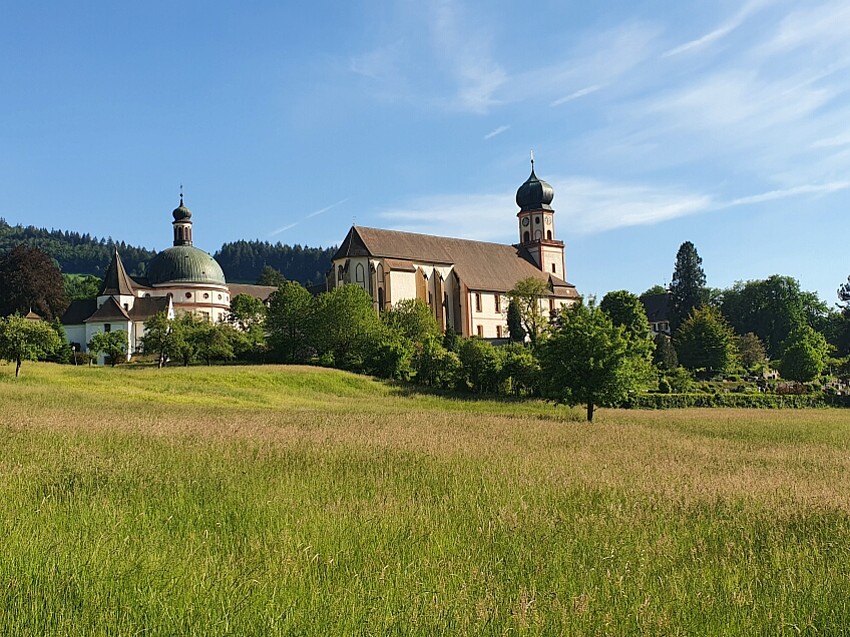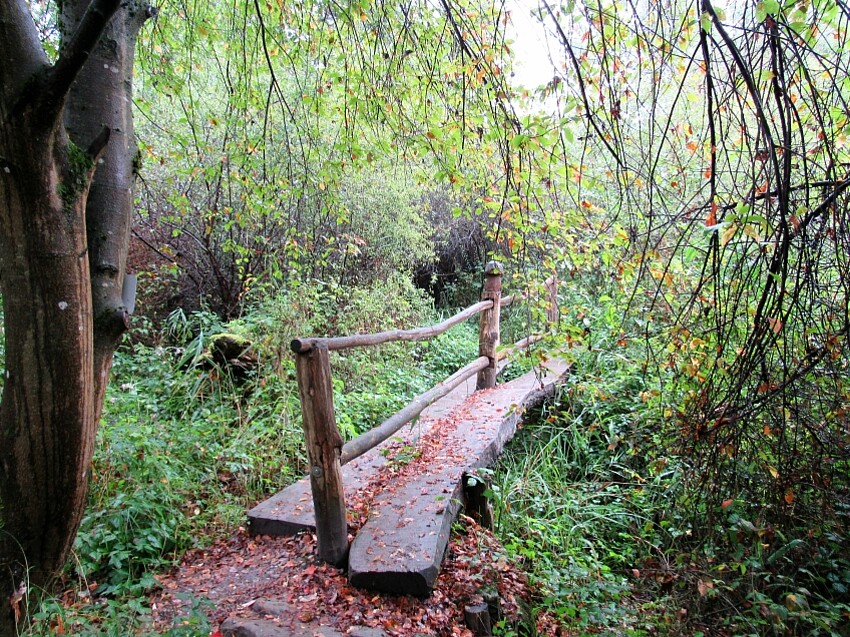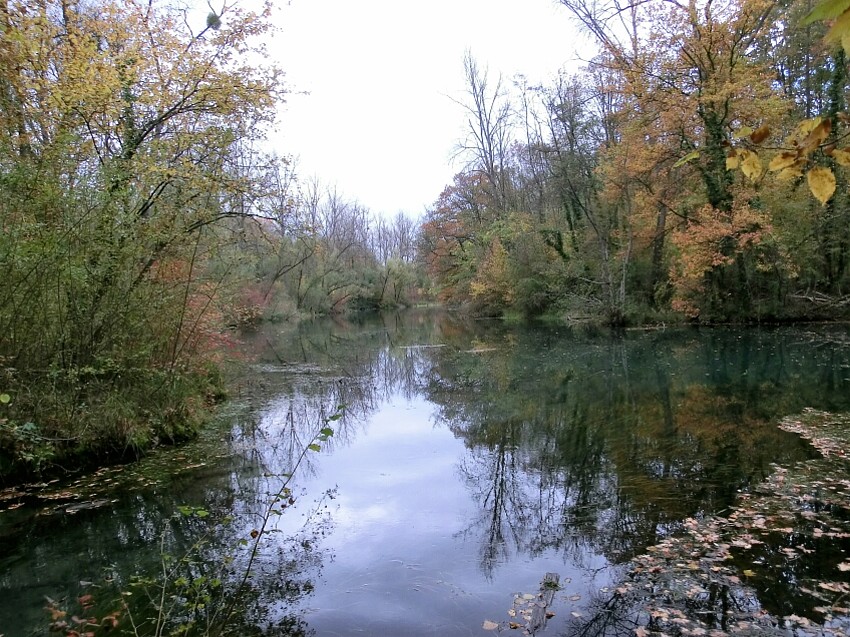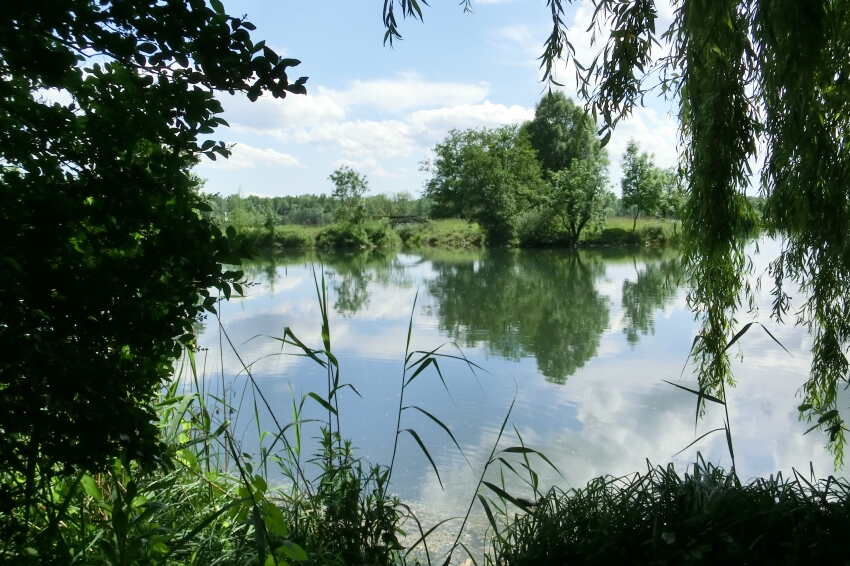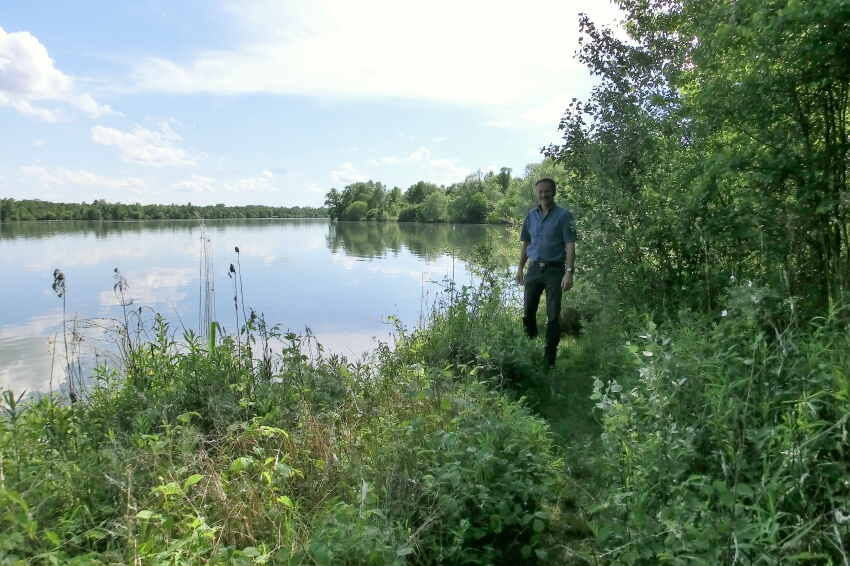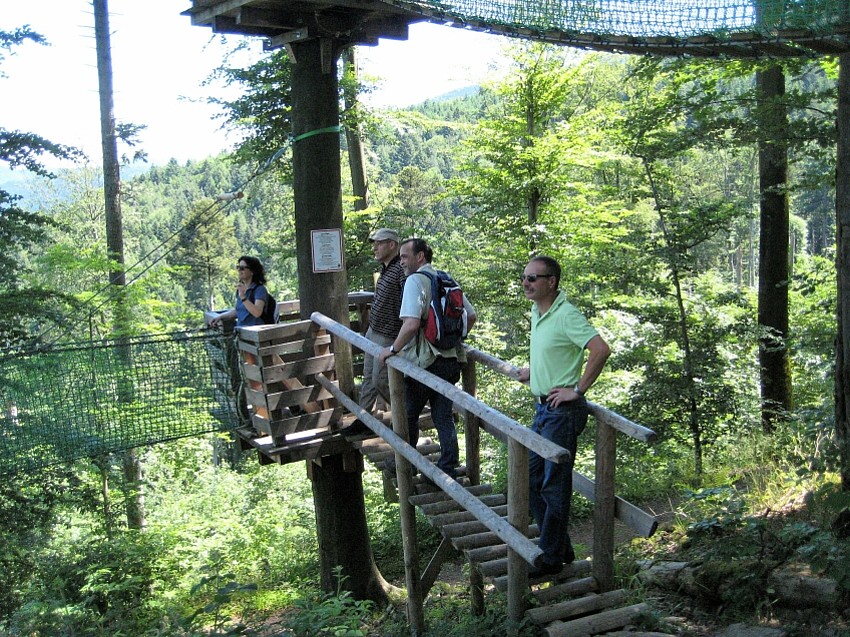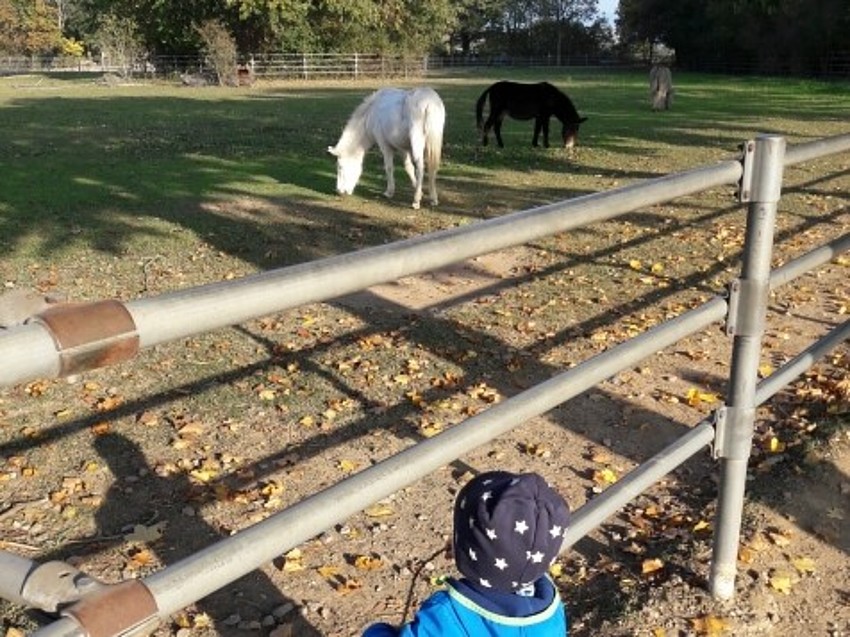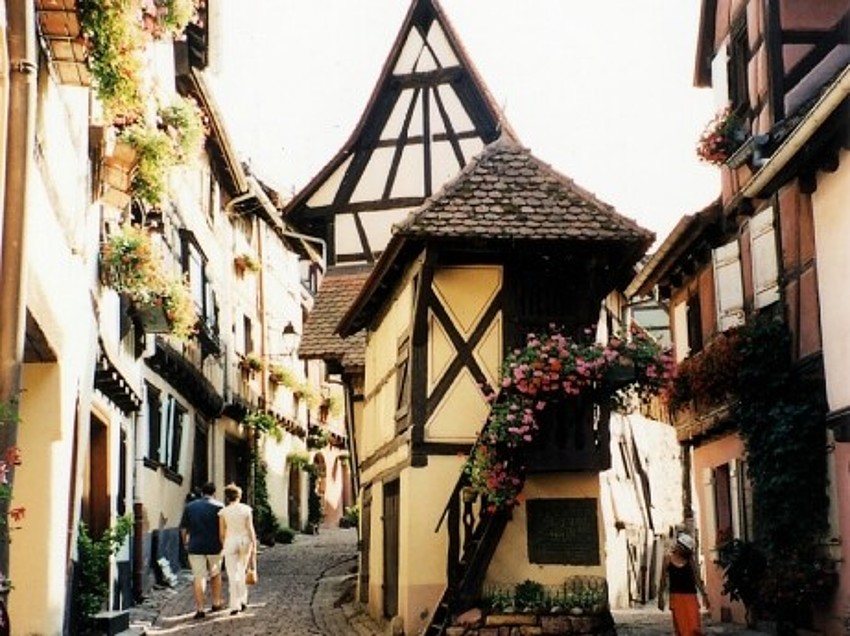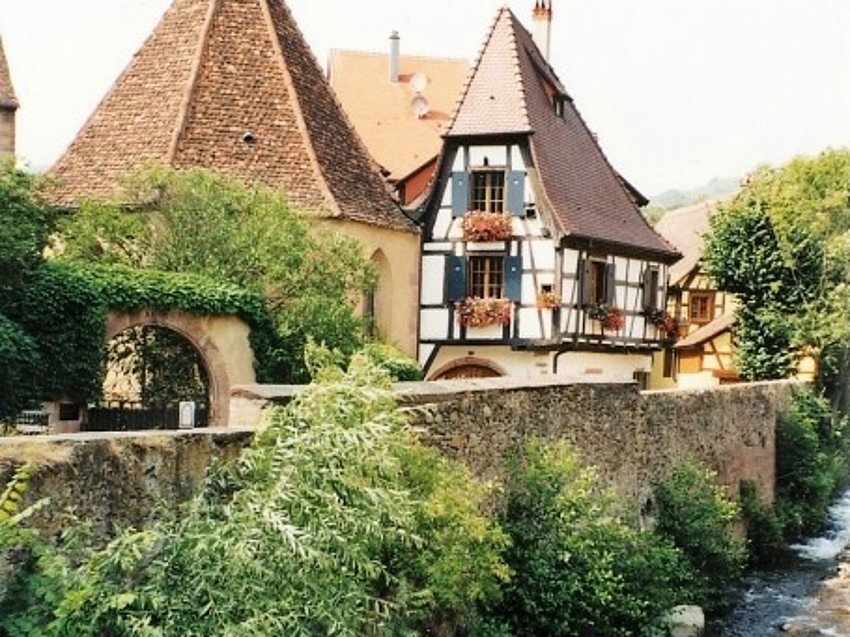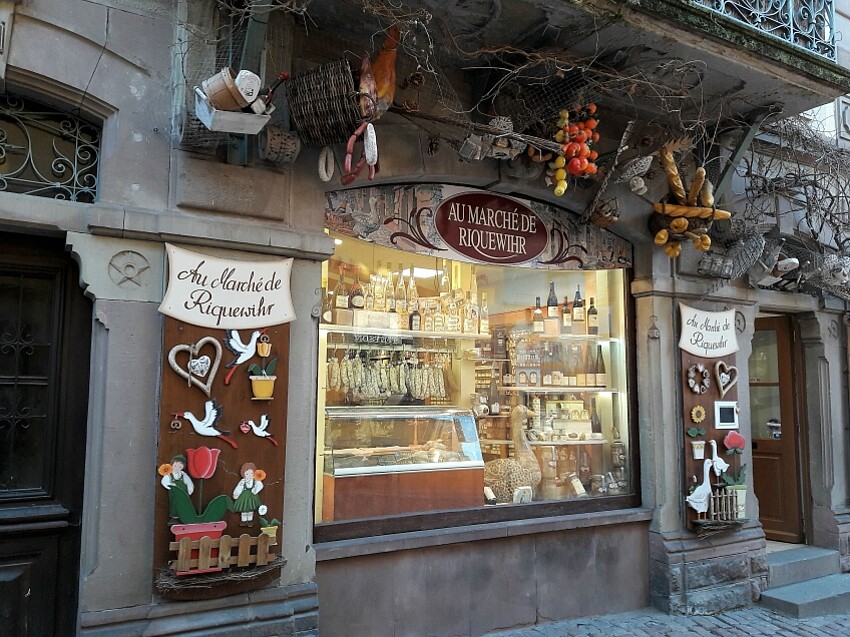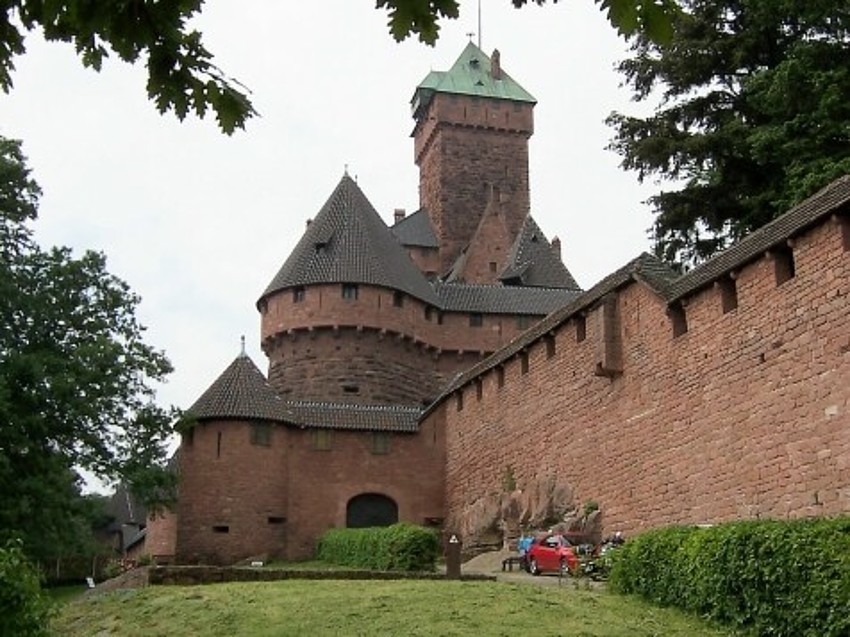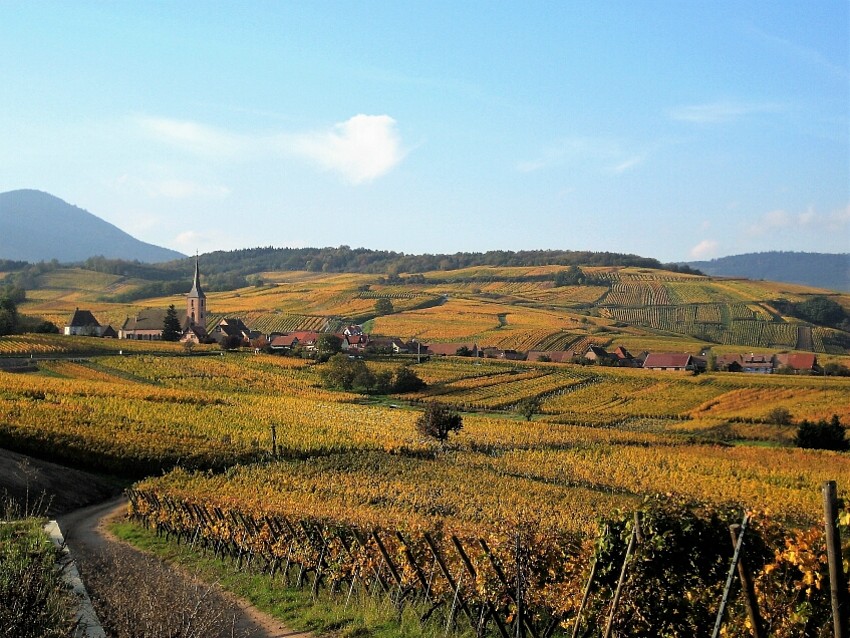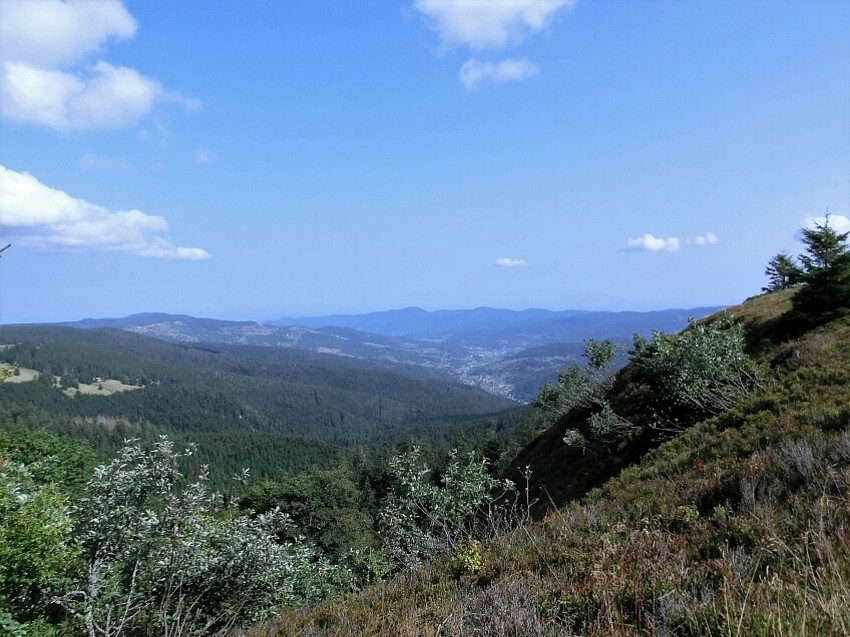
..... historic old towns and romantic villages, lakes and waterfalls, museums and amusement parks ...... for young and old, there is a lot to discover and to marvel at in our region.
The Black Forest is one of the most beautiful and varied areas in Germany. There is hardly a region that has so many faces: mountains high up to 1493 m (Feldberg) and deeply cut valleys, dark forests, lush meadows, sunny vineyards and orchards.
The Black Forest National Park, opened in 2014, with numerous hiking and adventure trails and a lot of worthwhile excursion destinations is right on our doorstep.
You can find more exciting excursion destinations in the valley of the Rhine and in the neighboring Alsace with its Vosges.
Below are some examples. You will find many other suggestions in lovingly arranged folders and daily in our "morning mail" at breakfast.
Waterfalls
The Triberg Waterfalls - Germany's highest waterfalls - are a particular great experience. The water of the Gutach plunges down more than 160m down to the valley in seven steps. The waterfalls are accessible all year round and offer an impressive backdrop even in winter. A special attraction are the squirrels that live there in large numbers. Since visitors can regularly feed them, they have lost their shyness and can be observed at close range.
In a secluded idyllic place of the Black Forest you can walk along the wildly romantic Waterfall of "Allerheiligen". Arriving on top of the waterfall you will find the remnants of the Premonstratensian monastery "Allerheiligen" (the name signifies "All saints") built in the 12th century. The ascent to the former monastery leads from the parking at the district road K5370 (direction Oppenau-Ruhestein) along a wild gorge and the highest natural waterfalls in the Black Forest. After the climb you can enjoy a nice stop in the garden of the "Klosterhof" restaurant. In the restored economic building nearby you can visit a permanent exhibition about the history of Allerheiligen. In summer, the ruins serve as a spectacular open-air stage. A short circular route leads you to the “Engelskanzel” (that means angel's pulpit) - a magnificent viewing point - and back to the parking at the K5370.
A trip to the wildly romantic Geroldsau Waterfall near Baden-Baden is particularly beautiful in May / June, because then there bloom lush rhododendrons in the most beautiful colours along the course of the stream. The waterfall can be admired from a rocky viewing point and a daring plank bridge. The water falls from a height of about 9 m. The "Bütthof", a popular restaurant destination, is situated not far away from the waterfall at an idyllic place in the forest.
The most beautiful lakes
The Schwarzenbachtalsperre (a barrage) is located at a height of 668 m between the Black Forest panoramic road and the valley of the Murg. It measures approximately 2.5 km in length. The imposing dam is one of the pioneering works of the 1920s in dam construction. There are many ways to spend the day there: right below the hotel restaurant "Schwarzenbach" near the dam there is a boat rental with rowing, pedal and electric boats. Bathing is also allowed. An about 6.5 km long path runs along the lake on the northern shore and leads back through the forest on the southern side. Several information boards tell about the construction of the dam and the technology of power generation.
The Mummelsee - a legendary lake located in the Northern Black Forest directly at the Black Forest panoramic road at 1032 m above sea level - is one of the few preserved tarns of the ice age in the Black Forest. You can explore the lake on a circular route or rent a pedal boat. From the lake you can climb up to the highest mountain in the Northern Black Forest (Hornisgrinde 1164 m). The ascent and descent (approx. 1 hour) is definitely worth it: from a lookout you have a wonderful panoramic view. We can also recommend a walk along the "Grindenpfad" (a path of approx. 3 km): on a plank path you cross a high moor and learn a lot about this landscape, about the climate and geology, unique plants and animals. After the tour, when coming back to the lake, the terrace of the Hotel Mummelsee invites you to linger still for a spell.
Another romantic tarn is located near Bad Rippoldsau-Schapbach: the mysical Glaswaldsee. It can only be reached on foot and can be circled on a small path with beatutiful views of the crystal-clear lake.
The largest lakes are situated in the southern part of the Black Forest. Lake Titisee is one of the most popular destinations in Europe. Lake Schluchsee - a former glacial lake - is the largest one in the Black Forest and like Lake Titisee one of the cleanest swimming lakes in Germany. In summer both of them attract many bathers. Also Hikers get their money's worth around the lakes as do sailors, surfers, paddlers and fishers. On a boat tour you can enjoy the beautiful landscape of the Black Forest from very special perspectives. From there you have a wonderful view of the "Feldberg", the highest mountain in the Black Forest.
Historic old towns
Already from afar the towers and gates of Gengenbach invite you to visit this picturesque old town. The focus is on the market square with pretty half-timbered houses and the imposing town hall, which is over 200 years old. Narrow alleys, in summer decorated with flowers, take you away to picturesque corners such as the "Engelsgasse" (alley of the angels). Gengenbach enjoys an excellent reputation as a cultural city.
Anyone visiting the Kinzigtal (Valley of the river Kinzig) should not miss the old market town of Haslach. Worth seeing are the historic old town with an abundance of remarkable half-timbered buildings, the museum of typical costumes of the Black Forest in the old Capuchin monastery and an old mine open to visit.
The little town of Wolfach was once an important base for raftsmen and a center of mining. You can visit a museum of minerals and an old mine nearby. Wolfach is also well known for its glassblowing factory “Dorotheenhütte”, where you can look over the glassblower's shoulder and try to create your own piece.
The small romantic Schiltach is also known as a town of half-timbered houses, raftsmen and tanners. It has hardly changed its face since the Middle Ages. Several museums bring the past to life: e.g. the Museum am Markt (city history), the Schüttesäge Museum (history of raftsmen and tanners) and a pharmacy museum.
The small town of Zell Harmersbach in the romantic Harmersbach-valley is also worth seeing: picturesque alleys and corners, remnants of the former city fortifications, towers and a harmonious combination of half-timbered houses and buildings of the Art Nouveau make up the charm of this place. Zell Harmersbach is also home to the world-famous ceramic tableware with the motif of cock & hen.
In Ettenheim you can experience urban flair and rustic tranquility. Stroll through the picturesque paved alleys of the historic center with beautiful half-timbered houses and baroque town houses! Visit the baroque church and the lovingly designed public gardens!
Gernsbach in the romantic Murgtal in the northern Black Forest is also worth a visit. Picturesque half-timbered houses, fountains, the old city fortifications and winding alleys invite you to stroll.
Museums
You can experience an exciting journey into the history of the Black Forest in the open-air museum "Vogtsbauernhof" in Gutach: Around the well-preserved Vogtsbauernhof (an ancient typical Blackforest farmhouse) built in 1612 and still at its original site, today are arranged six other fully furnished homesteads, the house of a day labourer and 15 outbuildings such as mills, saws, sheds and a reserved property. Suspenseful demonstrations and action days take you into the everyday life of earlier centuries and tell about handcrafts, traditions and customs in the Black Forest.
In the 15th century the rafting of timber on the river Kinzig had great economic importance in the Black Forest. It was the only and sometimes a dangerous way to bring the timber down to the valley. In the museum of raftsmen (Flößermuseum) at Gengenbach you will learn a lot of interesting facts about this subject. In Willstätt, a small town very close to us, where many of the raftsmen resided, a small section of the Kinzig was also dedicated to this subject in memory of the history of the rafting industry and the last raft that crossed the weir of the Kinzig in 1896.
Monasteries and churches
Since 1999, the approximate 100 km long "Klosterroute Nordschwarzwald" (panoramic road) connects three treasures for those who are interested in culture:
- the Benedictine Abbey Alpirsbach, one of the greatest Romanesque monasteries, built in 1095
- the more than 1000 years old Benedictine monastery Hirsau near Calw with its ample ruins
- the Cistercian Monastery Maulbronn, one of the best-preserved medieval monastery complexes north of the Alps and a World Heritage Site
Another special attraction on this route is the small romantic town of Zavelstein with its castle ruins. In spring countless wild crocuses bloom around this place.
Some famous churches can also be found in the southern Black Forest:
The Dome in St. Blasien, the former abbey church of the St. Blasien Monastery from 1783, is very impressive. Its cupola is one of the largest in Europe.
The baroque monastery church in St. Märgen, a former Augustinian monastery founded in 1118, is one of the most important pilgrimage churches in the Archdiocese of Freiburg.
The baroque church in St. Peter was a former Benedictine monastery. Its special feature is the high altar from 1727 with 8 different changing pictures, which are changed according to the sections of the church year.
The St. Trudpert monastery in Münstertal, a former Benedictine monastery with a magnificent monastery garden and now a preceptory of the Congregation of the Sisters of St. Josef of Saint Marc, is also very beautiful.
The Rhine and its floodplain forests
The nature reserve "Taubergießen" near Kappel-Grafenhausen is unique in Europe with its biodiversity, rare plants and animals that have long ceased to exist elsewhere. There you can walk on marked hiking trails through jungle-like floodplain forests, originally magnificent meadows with orchids and along rarely beautiful dead stream branches of the Rhine. You can also book excursions by boat there.
The "Auenwildnispfad" (floodplain wilderness path) near the Rhine at Altenheim also takes you into a piece of such pristine nature. Enjoy the interplay of forest and water in this unique habitat, marvel at rare plants and listen to the birdsong!
A similarly beautiful destination can be found on the French side of the Rhine near Plobsheim.
Leisure parks
In the first place to be mentioned is of course Germany's largest leisure park, the Europa-Park near Rust which is just situated only a few kilometers away. Experience a very special, exciting round trip across Europe there! The park is divided into 18 different European subject areas, each with its typical architecture, vegetation and culture. Rapid roller coasters, adventurous white water rides, fjord rafting and all kinds of rides for the whole family bestow an eventful and unforgettable day on you. Artists from all over the world enchant the audience with shows and performances in dance, artistry and magic.
Experience nature from an unusual perspective and meet the Black Forest at eye level! This is what the Baumkronenweg (path to the treetops) of the nature adventure park in Waldkirch promises. The imposing wood-and-steel-construction of the treetop path leads you barrier-free and gradually into the fascinating world of treetops. Here you will be surprised by a breathtaking view of the surrounding mountains and the Valley of the Rhine. In addition, there is a sensory path, a barefoot path and an adventure path on which you cross different rope bridges.
The Mundenhof near Freiburg is the largest animal park in Baden-Württemberg. Domestic and farm animals from all over the world live in spacious paddocks on 38 hectares. The educational offer "Kontiki" allows children direct contact with the animals. They are even allowed to ride on the camels.
In Oberried near Freiburg there is the Steinwasen-Park - a spacious animal park, in which you find also some fun rides - amongst others a summer toboggan run as well as a immense ropeway and an adventure playground - which promise lots of fun especially for children.
The Alsace
The Alsace on the opposite side of the Rhine, with its wild and romantic Vosges Mountains, which long, long ago formed a cohesive mountain range with the Black Forest, has a lot to offer, too:
A visit to the European capital of Strasbourg, just 20 km away, should not be missed. Not only the imposing minster with its famous astronomical clock is worth a visit. You should definitely take a look at the old town district "La Petite France" with its labyrinthine alleys and old half-timbered houses. The European Parliament building is also impressive ad can be visited. In its immediate vicinity is the “Orangery”, a very beautiful old park.
Other worthwhile destinations are Colmar with the world-famous Isenheim Altar, the towns of Eguisheim, Kaysersberg, Riquewihr and Ribeauville along the panoramic vine road "Route de vin", the castle Hochkönigsburg near Kintzheim, where you can see a performance with eagles and other rapturs. Nearby you can walk through a forest with monkeys. Other places of interest are the monastery on top of the mountain St. Odile, the ship lift near Arzwiller / Lützelburg and the fortress of Bitche and the rock church of Dabo, to name just a few examples.
The most beautiful panoramic routes are: the "Route de vin" with its numerous little scenic villages surrounded by large vineyards and the "Route des Crêtes" which crosses the highest mountains of the Vosges where you pass lonely farms (Ferme-Auberge), at which you can inexpensively taste the in-house products.


